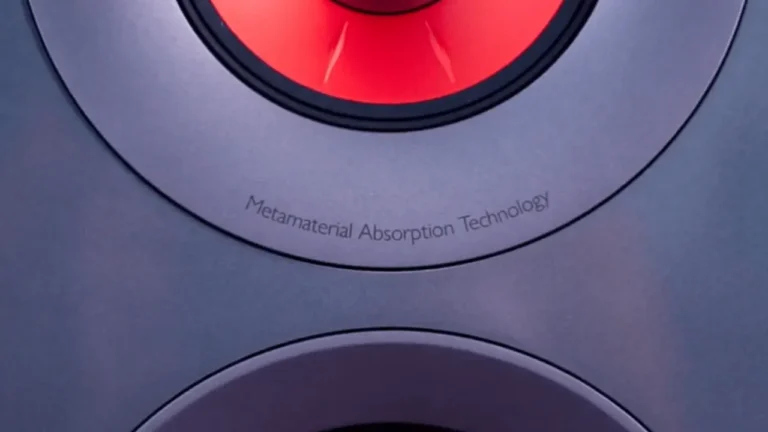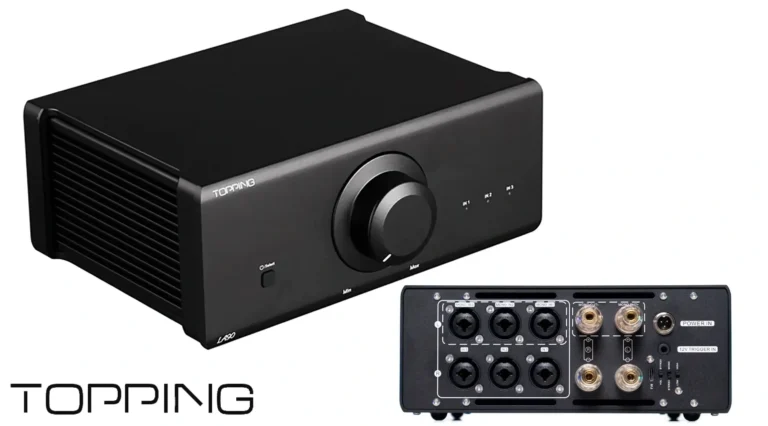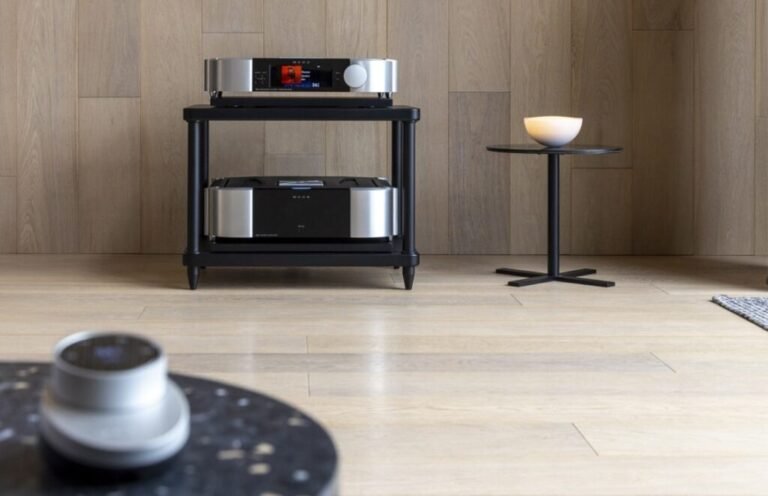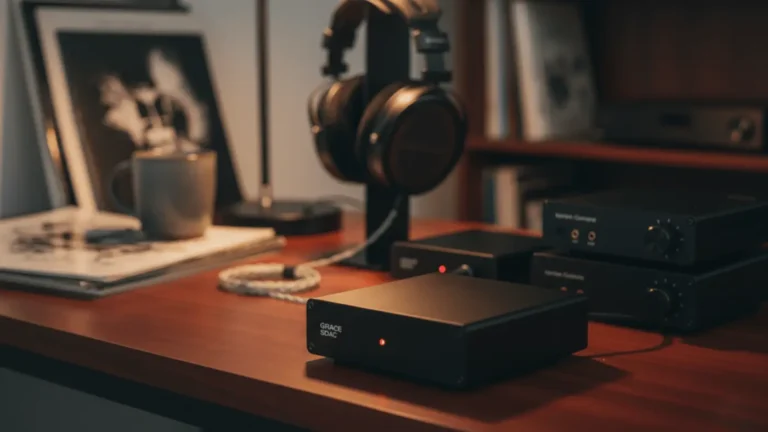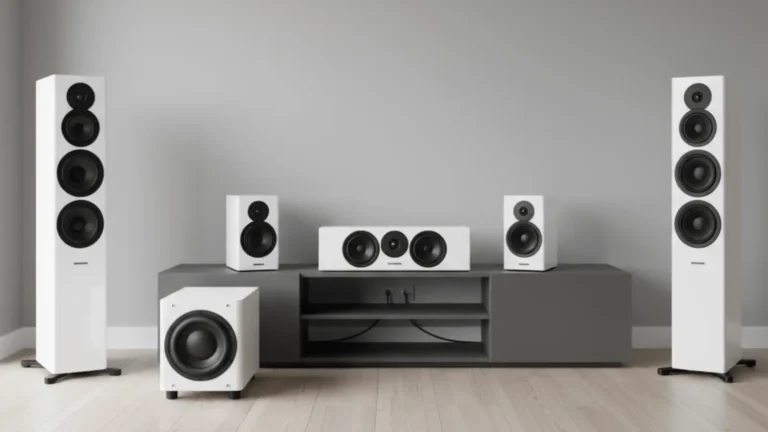Revival Audio Sprint 3 or Sprint 4? One Surprised Me More Than I Expected
They say that maintaining leadership is often harder than achieving it, a task now facing Jackie Lee and Daniel Emont, the founders of Revival Audio. Their market entry was bold, presenting high-tech bookshelf speakers in a retro design with rich finishes. Both models, released under the Atalante name, made a very positive impression on the expert community (including me) and proved to be very popular.
Their second act, an attempt to solidify their place in the world of high-end audio, is the Sprint series: more traditional and affordable speakers in a modern design, available as a floor-standing model, Revival Audio Sprint 4, and a medium-sized bookshelf (Revival Audio Sprint 3).
Check Out: Leak Stereo 230 Integrated Amplifier Review
The prices for the new models are a pleasant surprise: the Sprint 3 and Sprint 4 cost about half as much as the Atalante 3 and Atalante 5, respectively. At first glance, the speakers use the same core driver technology, suggesting promising sound quality. After a preliminary listen at the Fresh Hi-Fi & Vinyl Show in Moscow, my initial impressions were positive, but a topic this important deserves a more detailed investigation.
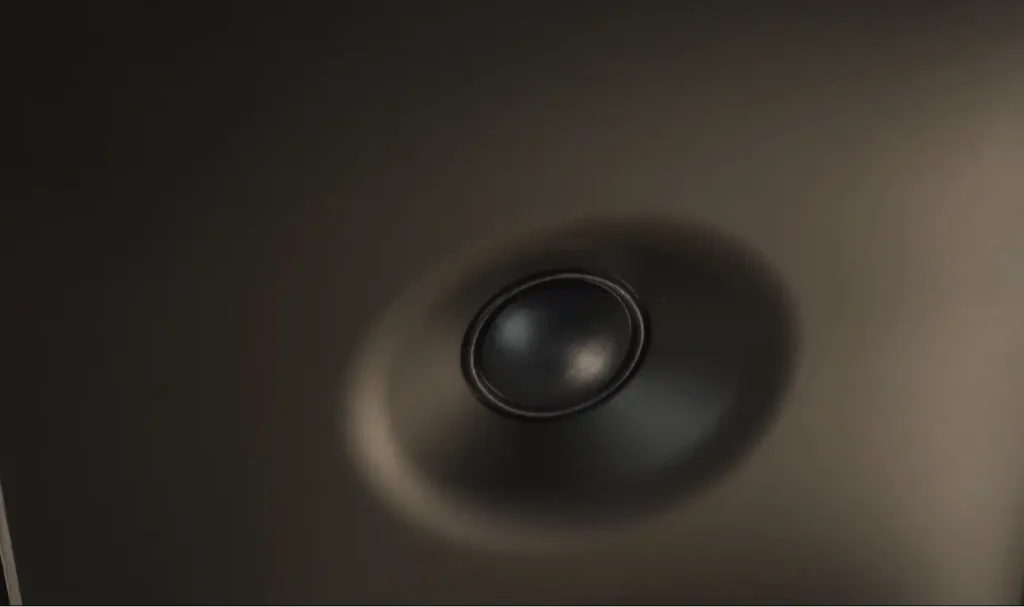
Design And Build Quality
The appearance of the new models was developed by the Parisian design studio A+A Cooren, whose award-winning specialists also worked on the Atalante speakers. As with the previous models, the Sprint’s design weaves together several styles. The rectangular cabinets with classic colorways reflect a modern take on home speakers, but they are combined with a front panel that features smooth, aerodynamic curves, much like a professional studio monitor.
Elegance is added by the matching floor stands and dedicated racks, which feature brass-tipped spikes and, of course, the company logo with its beautiful ligature. The color scheme is exceptionally well-crafted; all three cabinet finishes combine perfectly with the dark chocolate tone of the front panel.
The designers have done their job perfectly. The mixture of different styles and elements is so harmonious that it avoids feeling eclectic, resulting in a cohesive and appropriate look. Most importantly, this versatile approach allows the Sprint speakers to fit into almost any interior, whether modern or classic, while guaranteeing they are 100% recognizable as a Revival Audio product.
Proprietary Technologies
Both Sprint models use drivers based on the same technologies and materials found in the high-end Atalante series. The 28mm tweeter features a fabric dome treated with Revival’s proprietary RACS coating for added rigidity and true piston-like motion. The dome is mounted on an asymmetric suspension to protect it from resonances and flexing during operation. Behind the dome is an ARID+ (Anti-Reflection Inner Dome) diffuser that, according to the company, eliminates over 95% of the resonant phenomena that occur under the dome without creating compression. The design allows air to pass through the magnetic system into a rear anti-resonant BCD chamber, where unwanted reflections and overtones are completely suppressed.
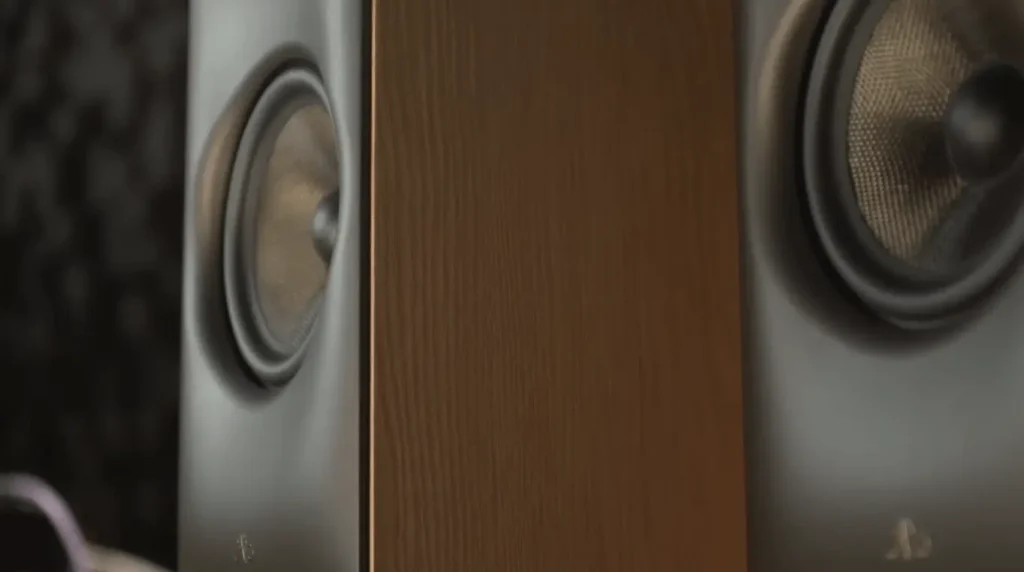
The mid-woofer features Revival Audio’s pioneering BSC (Basalt Sandwich Construction) cone, a three-layer design that uses felt as a damping material and an outer layer of basalt fiber.
While the core technologies are identical, the drivers have some visual differences compared to those in the Atalante series. The developers chose not to focus on these minor differences. Instead, the main focus of the Sprint model shifts to a new technology: ELYTRON. This is the name for that distinctive front panel that resembles a studio monitor.
This visual similarity is dictated by physics; the ELYTRON panel is, in fact, one large waveguide. Its purpose is to control the drivers’ dispersion and minimize sound reflections from the front panel. This eliminates coloration, reduces distortion, and creates a more accurate sound image at the listening position.
Of particular interest is that the ELYTRON panel is removable and held in place by magnets. When removed, a fabric grille can be inserted into the mounting holes. This grille is assembled on a round frame without any rigid cross-members, opposite the speaker cone, there is only stretched fabric.
Both Sprint models use a bass-reflex design. The Sprint 4 floor-stander has two ports, giving users more options for fine-tuning the bass response by blocking one or both if needed. The speakers feature phase-linear crossovers with a small number of high-quality, hand-selected components. The final tuning was done exclusively by ear. As Daniel Emont said, “Measurement can make a good crossover, but only experience and craftsmanship can help you make something truly extraordinary.” A bold statement, but one that rings true. To ensure this finely-tuned crossover isn’t compromised, the developers installed only a single pair of speaker terminals, forgoing bi-wiring or bi-amping.
The ELYTRON Effect: A Touch of Magic
I can only speculate on the real reasons the developers made the front panel removable, but I suspect the grilles are just an excuse. The entire design feels like a clever provocation, intended to make the user truly appreciate the effectiveness of the ELYTRON technology. It’s impossible to resist experimenting with all the options: with the panel and grilles, with the panel but no grilles, and of course, with the speakers running ‘bare’ without either.
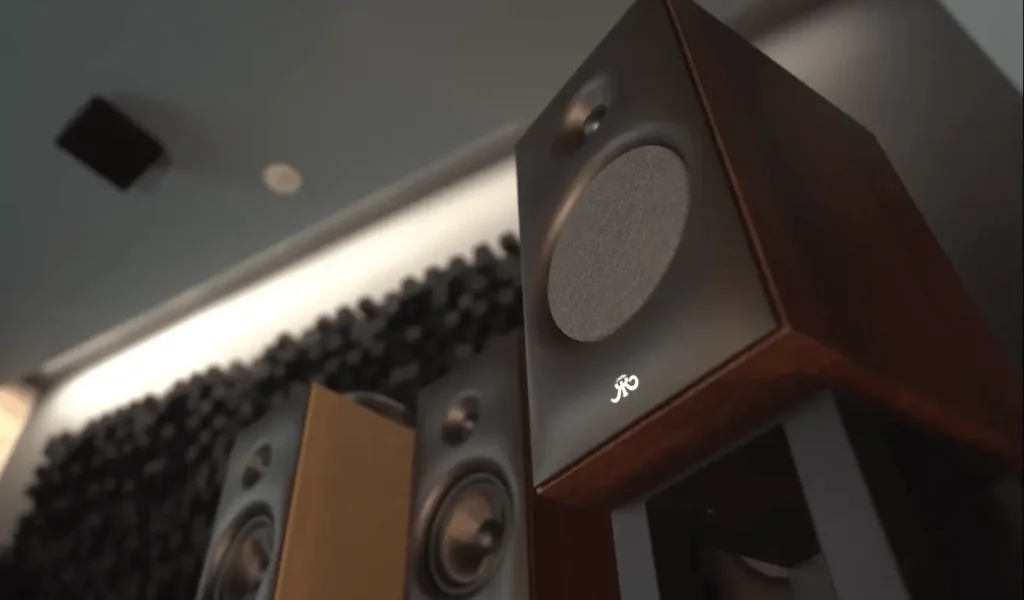
My listening test began with this last option. The process of removing and installing the panel and grilles is incredibly simple, thanks to the magnets, though care must be taken as the tweeter is completely unprotected.
Without the waveguide panel, the speakers disperse sound as widely as possible, filling the room evenly. However, at the listening position, the result is a very wide but flat soundstage. The sound lacks cohesion, and the speakers are easily pinpointed by ear. With the fabric grilles installed, the effect is reversed: the dispersion becomes narrowly focused, requiring the speakers to be toed-in towards the listener. The sound is still tied to the speakers, and the grilles slightly reduce midrange detail.
However, using the ELYTRON panels without the grilles is what transforms the sound and creates real magic, giving these mid-budget speakers the character of a serious High-End system.
- The soundstage completely detaches from the physical location of the speakers, drawn with holographic accuracy and unlimited volume.
- A sense of realism and perfect tonal balance appears in the mid-to-high frequency range.
- Detailing increases significantly, rendering the timbres of voices and acoustic instruments with greater fullness and accuracy. To achieve this maximum effect, the speakers should be set up in a traditional equilateral triangle, pointed at the listener.
Sound Signature: A Fundamental Balance
The sonic difference between the floor-stander and the bookshelf model was obvious and entirely in line with expectations. While the smaller Atalante 3 could be mistaken for a floor-stander due to its bass output, the Sprint 3 delivers an honest bookshelf sound without pretending to offer deep bass. Meanwhile, the Sprint 4 floor-standers create such a solid and powerful low-frequency foundation that the thought of a subwoofer never arises. The results are textbook.
Crucially, the character of the sound is identical between the two models. Both produce a spacious, expressive, and realistic sound, perfect for relaxed, enjoyable listening.
- Highs: With all their transparency and purity, they remain accurate and unintrusive. Harsh sounds and sibilance (‘s’ and ‘t’ sounds) in vocals are controlled, making violins and brass sound comfortable and non-aggressive.
- Mids: The midrange is rendered with as much detail as possible, with rich timbres and a noticeable bias towards warm tones, making it feel exceptionally lively and expressive. This is especially evident on vocals, acoustic guitar, jazz, and chamber classics. Even electronic music takes on a subtle analog warmth.
- Bass: The bass punch combines elasticity with softness, avoiding a hard, aggressive attack. During my tests, I felt that the speakers delivered slightly more bass than expected, as if a ‘+2 dB’ bass control had been applied. This was true for both models, lending an especially rich and full-bodied quality to low male voices. This presentation isn’t irritating at all; on the contrary, it makes the music sound more pleasant and comfortable.
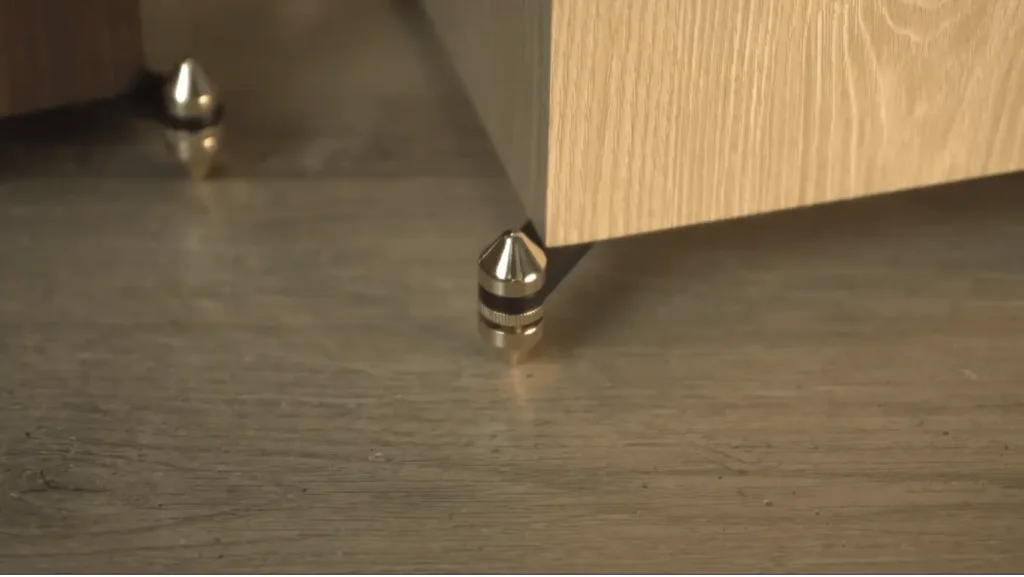
This signature Revival Audio sound is strictly dosed. Combined with their transparency, holographic stage, good macrodynamics, and excellent rhythm, it allows the speakers to confidently handle almost all musical genres. Even metal sounds quite decent: guitars are legible, instruments don’t fall into a mess, and the dynamics are excellent.
Conclusion:
Revival Audio’s new Sprint series is a comfortable, expressive, and powerful-sounding speaker line. The excellent rhythm speaks to the high accuracy of the crossover tuning, while the branded waveguide overlay works wonders, convincingly proving the developers’ expertise. The same can be said for the design. By entrusting it to a third-party studio, the creators of Sprint made a wise choice.
In short, this is a mature, balanced, and professional product. There are no ‘growing pains’ or meandering creative experiments often found in young brands. All decisions feel deliberate and well-considered, which inspires confidence and respect.
In the end, the user gets a high-quality speaker that, on the one hand, has its own distinct and pleasing character, and on the other, fits perfectly into any interior while confidently handling any music. This is a rare combination and a serious claim to repeat the success of the flagship models.
Pros
- Musical and expressive sound
- Holographic stage with the ELYTRON panel
- Ability to change the character of the sound and appearance
Cons
- No Twitter protection
Technical Specifications Revival Audio Sprint 3
| Type | 2-way bookshelf loudspeaker |
| Drivers | 1 1/8” (28mm) soft-dome tweeter equipped with Revival Audio ARID (Anti Reflection Inner Dome) patented technology with a large back chamber with the low resonance frequency of 650Hz7” (18cm) BSC (Basalt Sandwich Construction) woofer |
| Frequency Response (+/-3db) | 55Hz – 22kHz (-3dB) |
| Sensitivity (2.83V/1m) | 87dB/2.83V/ 1 metre |
| Nominal Impedance | 6 ohms |
| Minimum Impedance | 4.5 ohms at 175Hz |
| Crossover Frequency | 1.8kHz |
| Recommended Amplifier Power | Power handling: 150 watts, starting from 30 watts. |
| Recommended Room Size | 15 to 35 m2 |
| Dimensions (H*W*D) | 380 mm x 213 mm x 307 mm |
| Net Weight | 1 1/8” (28mm) soft-dome tweeter equipped with Revival Audio ARID (Anti Reflection Inner Dome) patented technology with a large back chamber, with the low resonance frequency of 650Hz7” (18cm) BSC (Basalt Sandwich Construction) woofer |
Technical Specifications Revival Audio Sprint 4
| Type | 2.5-way floorstanding loudspeaker |
| Drivers | 1 1/8” (28mm) soft-dome tweeter equipped with Revival Audio ARID (Anti Reflection Inner Dome) patented technology with a large back chamber with a low resonance frequency of 650Hz7” Mid/bass (18cm) BSC (Basalt Sandwich Construction) woofer7” Bass (18cm) BSC (Basalt Sandwich Construction) woofer |
| Frequency Response (+/-3db) | 45Hz – 22kHz (-3dB) |
| Sensitivity (2.83V/1m) | 89dB/2.83V/ 1 metre |
| Nominal Impedance | 4 ohms |
| Minimum Impedance | 3.8 ohms at 200Hz |
| Crossover Frequency | 1.6kHz and 2.2kHz |
| Recommended Amplifier Power | Power handling: 180 watts, starting from 30-50 watts. |
| Recommended Room Size | 30 to 60 m2 |
| Dimensions (H*W*D) | 1060 mm x 213 mm x 307 mm |
| Net Weight | 20.6 kg (45.42 lbs.) |


